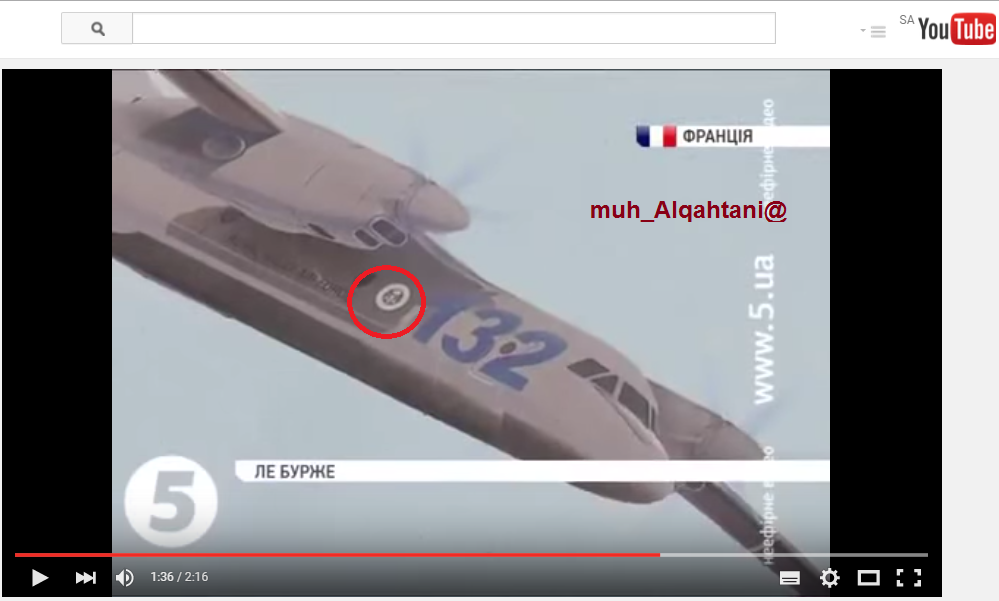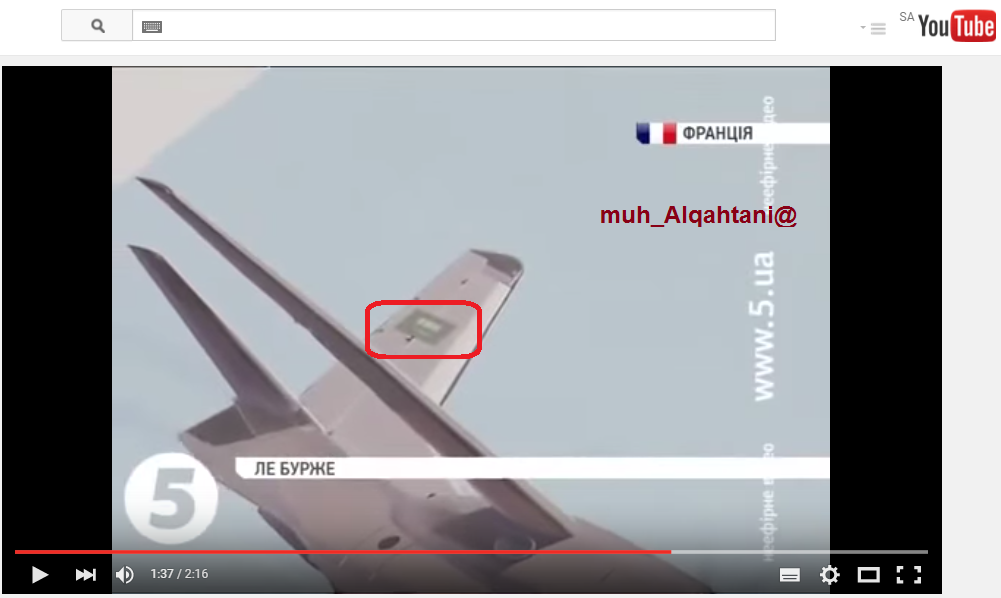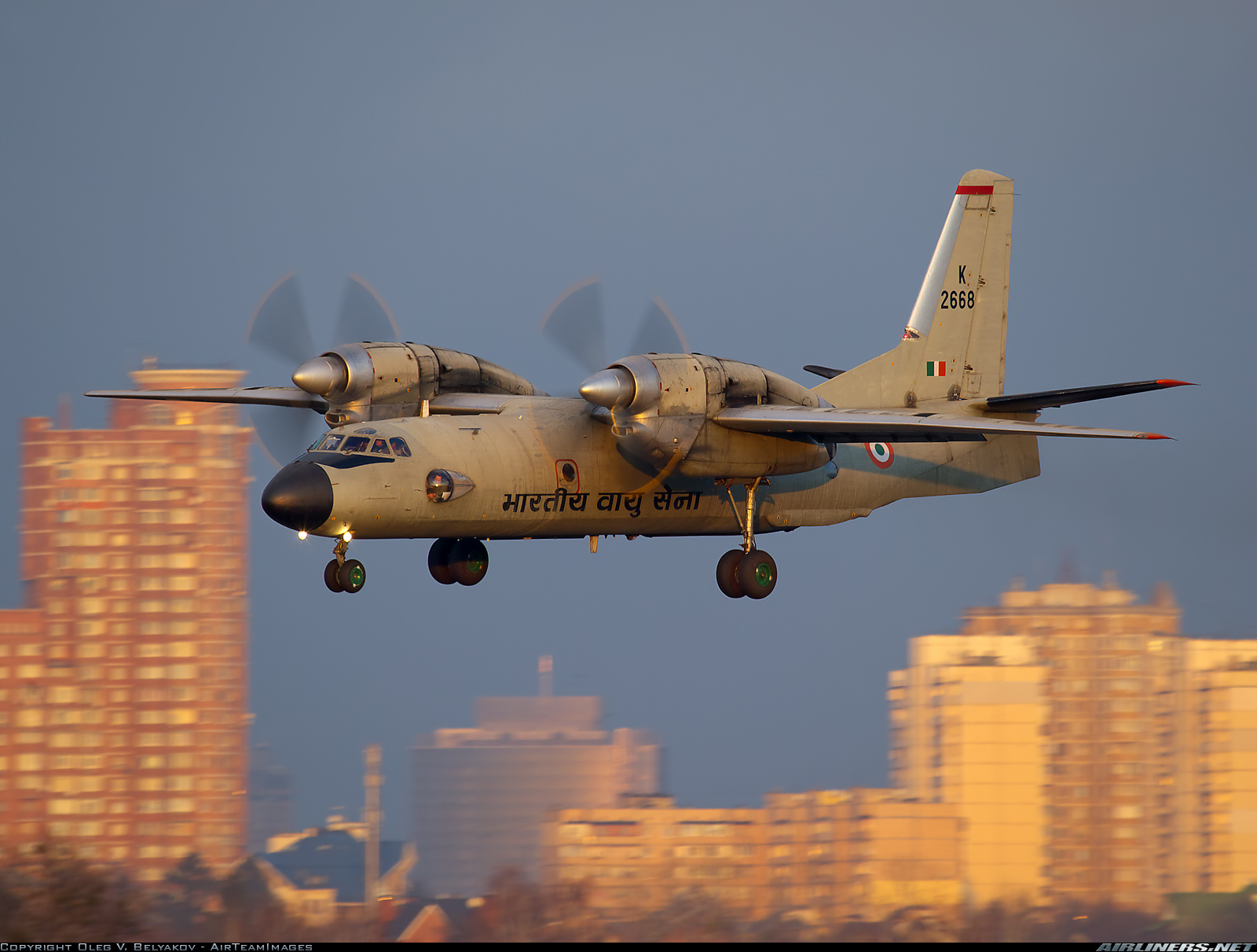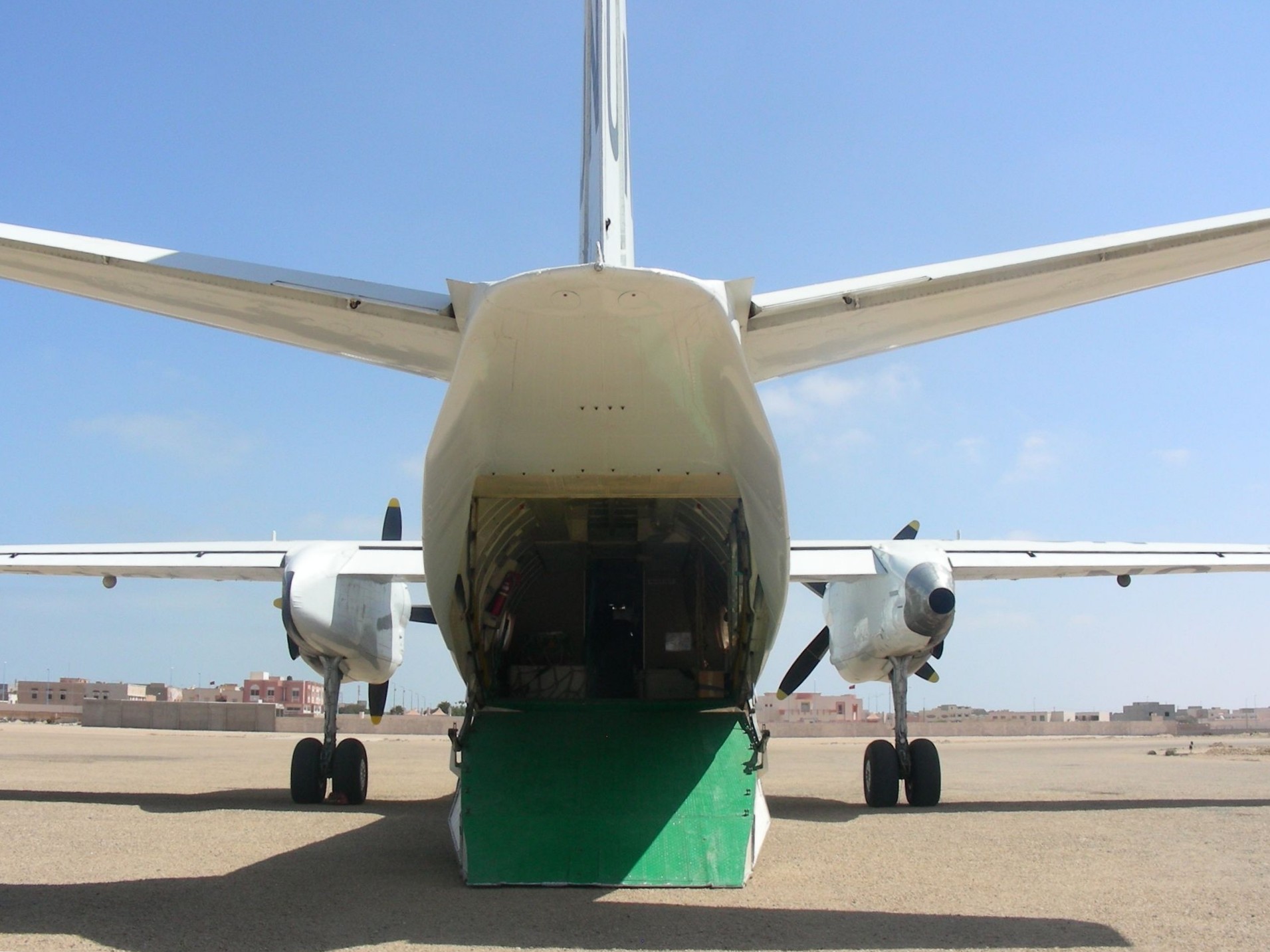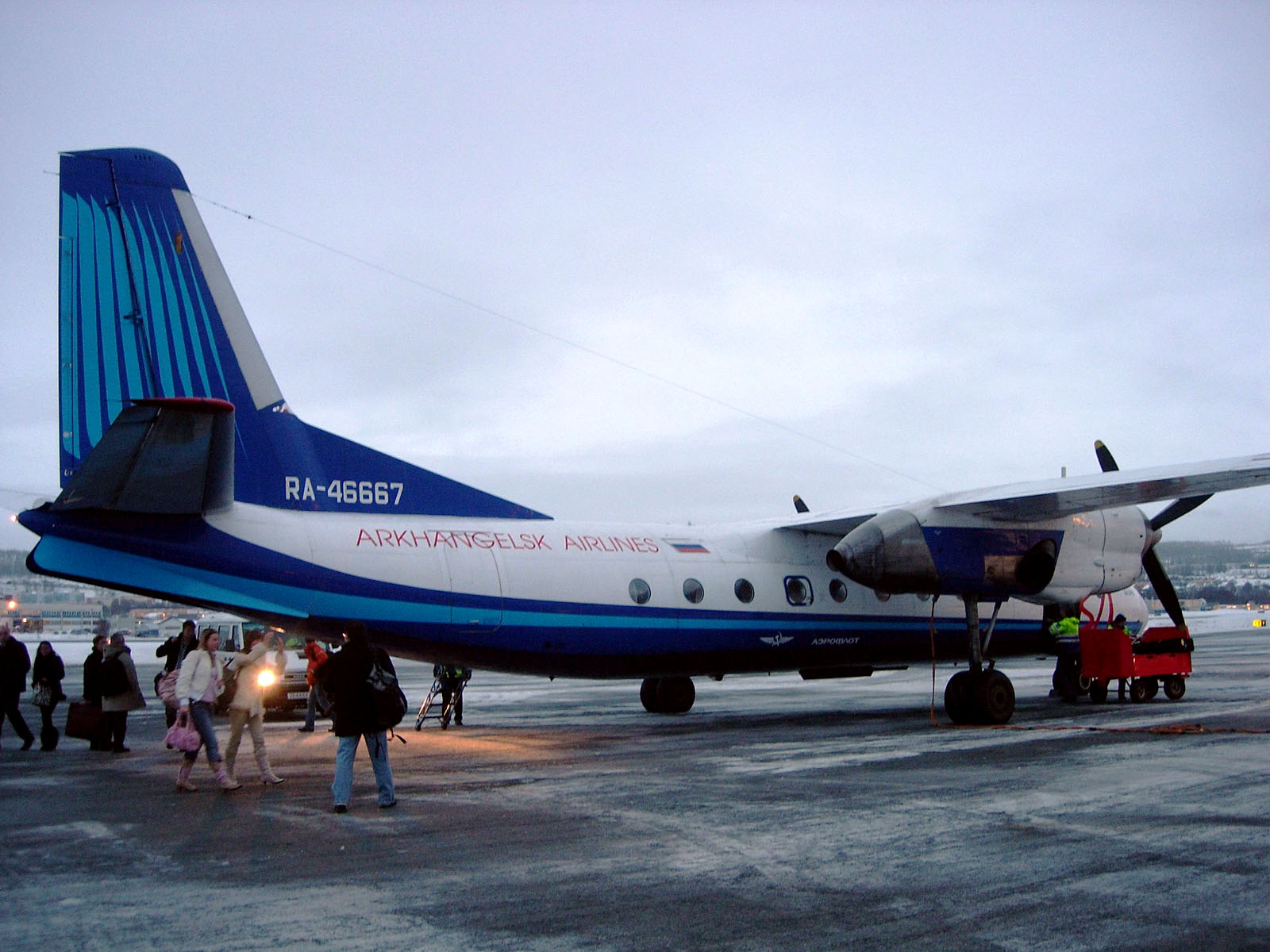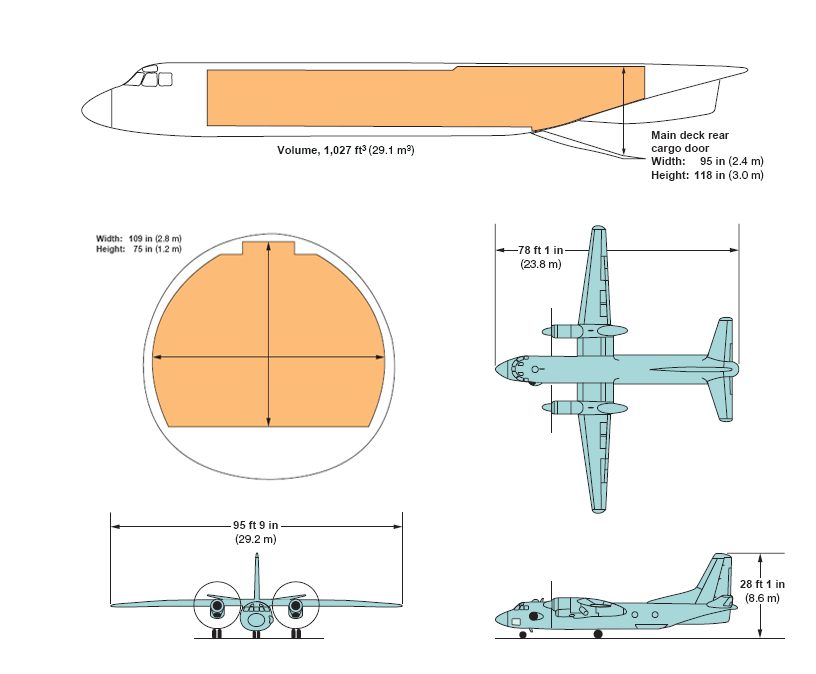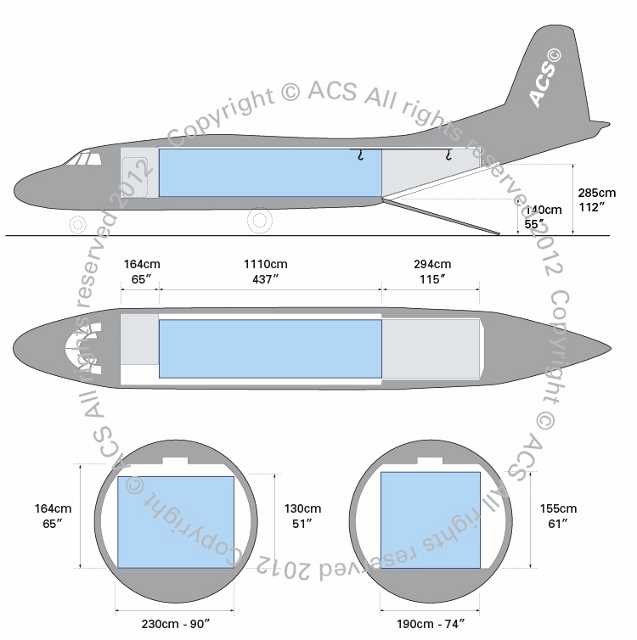أعلنت الشركة المصنعة الأوكرانية رسميا عن إطلاق أنتونوف An-32 وسوف تنتج بالاشتراك مع أوكرانيا والسعودية .
in Defence / Features
New Saudi-Ukrainian aircraft programme launched
Posted 28 August 2015 · Add Comment
Ukrainian manufacturer Antonov has formally announced the launch of its new Antonov An-132 military freighter. The aircraft, which is a derivative of the existing An-32 Cline, will be produced jointly by Ukraine and Saudi Arabia for both military and civilian use. Jon Lake looks at the programme.
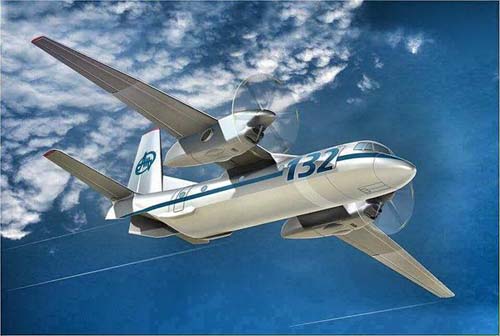 This Antonov announcement, at the Paris International Airshow, followed the signature of contracts on May 6 2015 for co-development and co-production by Antonov, the King Abdulaziz City for Science and Technology (KACST) and the Taqnia Aeronautics Company.
This Antonov announcement, at the Paris International Airshow, followed the signature of contracts on May 6 2015 for co-development and co-production by Antonov, the King Abdulaziz City for Science and Technology (KACST) and the Taqnia Aeronautics Company.
The Taqnia Aeronautics Company is a subsidiary of the Saudi development and investment company Taqnia, which is sponsored by the council of economic affairs and development, chaired by HRH Prince Mohammed bin Salman bin Abdulaziz Al Saud, deputy Crown Prince and Defence Minister and special adviser to the custodian of the Two Holy Mosques.
The contract followed some seven months of serious negotiations after initial talks between Antonov and the Saudi side had begun in 2013.
Defense News quoted a source as having reported an “initial payment of $150 million”, with an initial plan for the production of eight aircraft.
Under the terms of the agreement, which was signed by Antonov’s chief designer, Dmitry Kiva, and Turki Bin Saud Bin Mohammed Al-Saud, chairman of Taqnia Aeronautics and president of the King Abdulaziz City for Science and Technology, there will be extensive technology transfer and Saudi participation.
Al Saud said that the Saudis will “own” the intellectual property and engineering designs for the aircraft.
The new joint venture will employ only Ukrainian and Saudi nationals and Saudi personnel will work on the project in-kingdom and in the Ukraine.
The An-132 programme is expected to play an important part in strengthening the kingdom’s drive to develop a domestic military and aerospace industry, which is a key element in Saudi Arabia’s on-going attempts to diversify its economy beyond oil production and to reduce reliance on imports.
Saudi Arabia already manufactures aerospace components and undertakes in-depth civil and military aircraft maintenance but has not, as yet, undertaken large-scale aircraft assembly.
The basic An-32 is extremely well suited to use in the Middle East, with excellent hot and high performance and austere airfield capability. This led to an Iraqi Air Force order for six An-32Bs, which were delivered by 2012. An improved variant would be even more useful in the region.
There have been a number of attempts to produce improved derivatives of the Antonov An-32, including a proposed AN-32B-300 variant that would have featured the same Rolls-Royce AE2100D engines and GE Aviation Dowty R391 eight-bladed propellers as the Alenia C-27J, together with Rockwell Collins avionics and other improvements. The An-32B-300 promised more than 20% improvement in fuel efficiency and range with a maximum payload of 7,500kg.
The new-generation An-132 offers even greater improvements and will be capable of carrying payloads of up to 9.2tonnes out to a maximum range that is double that of the original An-32, and with a maximum cruising speed of 550km/h (80km/h faster than the An-32). This is made possible by using modern full authority digital engine control (FADEC)-equipped 5,071shp Pratt & Whitney Canada PW-150A engines – originally designed for the Bombardier Q400 – apparently driving highly efficient Hamilton Sundstrand six-bladed auto-feathering, synchrophasing composite propellers, like those used on the Airbus Military C295.
The Taqnia/KACST An-132 will also feature a two-man glass cockpit and a Honeywell navigation system, with other equipment from various US and UK suppliers, including General Electric and Liebherr.
Externally, the new aircraft bears a close similarity to the original An-32, with an almost identical empennage, wing and cabin, and with the same characteristic ventral fins flanking the rear-loading ramp.
Forward of the wing, the fuselage is completely redesigned, with a longer, lower, flatter nose, with bigger, deeper cockpit windows. This makes the new aircraft about 66cm longer than the original, at 24.44 metres.
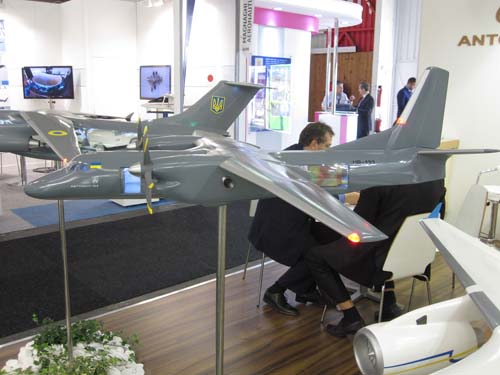 The aircraft has cabin doors fore and aft on both sides of the fuselage, instead of one door on the starboard side of the forward fuselage only. With modern navigation equipment and a two-man crew on the flight deck, the aircraft no longer has a dedicated navigator’s station and lacks the characteristic ‘observation bubble’ usually fitted on the port side of the fuselage of Antonov’s twin-engined transports (An-24 Coke, An-26 Curl, An-30 Clank and An-32 Cline).
The aircraft has cabin doors fore and aft on both sides of the fuselage, instead of one door on the starboard side of the forward fuselage only. With modern navigation equipment and a two-man crew on the flight deck, the aircraft no longer has a dedicated navigator’s station and lacks the characteristic ‘observation bubble’ usually fitted on the port side of the fuselage of Antonov’s twin-engined transports (An-24 Coke, An-26 Curl, An-30 Clank and An-32 Cline).
The new An-132 was originally aimed at meeting a possible Indian Air Force requirement for 56 light transport aircraft to replace its ageing Avros, as India’s HS-748s are still known. The conflict between Russia and Ukraine has meant that the new Antonov is no longer in contention for this requirement, however.
Instead, initial production will be to meet a specific Saudi requirement, though Antonov says that it has identified a global market for 900 aircraft, primarily as a replacement for the original An-32 and the older An-26, both of which are high-wing, twin-turboprop tactical transports with rear loading ramps.
The 900 aircraft sales forecast would suggest that Antonov has abandoned any hope of the An-132 replacing the large number of An-26s and An-32s currently in service in Russia, apparently accepting that that market will now fall to the Russian-made Ilyushin Il-112.
The first of up to three prototype An-132s will be rolled out at the end of 2016 and will then be followed by series production aircraft from 2017 or 2018, with an initial annual build rate of 8-12 aircraft.
The An-132 is being marketed to potential customers in the Middle East, Africa, Asia, and South America, in both the military and civilian sectors. Though primarily intended as a military tactical transport and commercial cargo aircraft, the basic An-132 aircraft will be capable of carrying out a wide spectrum of roles, from air-dropping and troop transport to casualty evacuation and intelligence, surveillance, and reconnaissance (ISR).
Dedicated sub variants are already being studied for fire-fighting and for maritime patrol. A sea patrol maritime patrol aircraft (MPA) variant with an under-nose electro-optical/infrared (EO/IR) turret and a belly-mounted radome was promoted at Paris, while the proposed water bomber featured external tanks like those fitted to the existing An-32P.
The original An-32 was distinguished by the unusual over-wing mounting of its engines, which allowed the installation of wider diameter propellers driven by 5,100hp AI-20 turboprops. These gave almost double the output of the An-26’s engines, allowing the An-32 to carry almost 50% more payload (6,900kg or 14,750lb) with a 1,050km/650 mile range at full load.
The An-32 was also able to take off with much higher payloads in hot and/or high-altitude conditions, so it came as no surprise when the Indian Air Force became the launch customer.
The new An-132 reverts to a more conventional engine mounting but will inherit the best characteristics of its predecessor, including excellent performance in hot climates and in mountainous terrain, and good basing flexibility, thanks to a real ability to operate autonomously from unpaved runways and unprepared airfields.
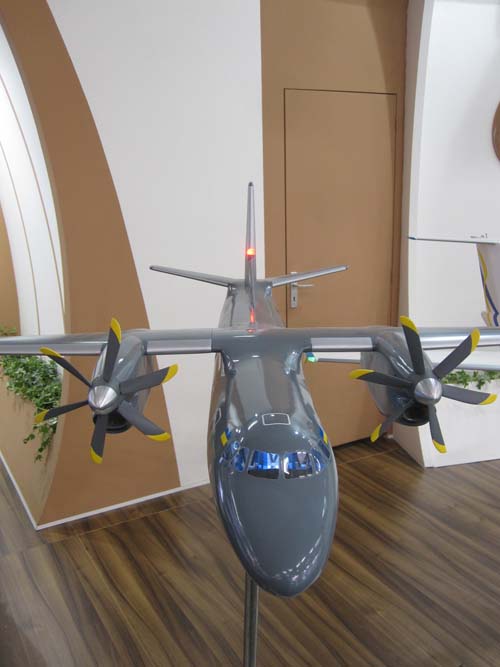 The aircraft has comprehensive built-in loading/unloading equipment and an auxiliary power unit. It should offer western standards of reliability and maintainability, and is designed for a 40,000-hour, 25,000-cycle, 40-year life.
The aircraft has comprehensive built-in loading/unloading equipment and an auxiliary power unit. It should offer western standards of reliability and maintainability, and is designed for a 40,000-hour, 25,000-cycle, 40-year life.
For markets requiring a lighter weight aircraft than the An-132, Antonov offers the An-140T, which more closely replaces the legacy An-26 twin-engine turboprop in terms of payload performance.
Sitting above the An-132 in the range is the new twin turbofan Antonov An-178 (broadly comparable with the Embraer KC-390, which has gained some traction in the Middle East).
There is also a new An-188 (a slightly stretched, turbofan-powered, derivative of the four prop An-70 military transport), and a proposed update of the massive An-124 Condor. This, the An-214-121, would be fitted with new avionics and a modern glass cockpit, as well as improved or new engines.
There may be some scope for some Saudi industrial participation in some of these programmes, according to some sources.
- See more at: http://www.arabianaerospace.aero/ne...e-launched.html#sthash.EiOUaosN.OhfKWK6Y.dpuf
http://www.arabianaerospace.aero/new-saudi-ukrainian-aircraft-programme-launched.html
in Defence / Features
New Saudi-Ukrainian aircraft programme launched
Posted 28 August 2015 · Add Comment
Ukrainian manufacturer Antonov has formally announced the launch of its new Antonov An-132 military freighter. The aircraft, which is a derivative of the existing An-32 Cline, will be produced jointly by Ukraine and Saudi Arabia for both military and civilian use. Jon Lake looks at the programme.

The Taqnia Aeronautics Company is a subsidiary of the Saudi development and investment company Taqnia, which is sponsored by the council of economic affairs and development, chaired by HRH Prince Mohammed bin Salman bin Abdulaziz Al Saud, deputy Crown Prince and Defence Minister and special adviser to the custodian of the Two Holy Mosques.
The contract followed some seven months of serious negotiations after initial talks between Antonov and the Saudi side had begun in 2013.
Defense News quoted a source as having reported an “initial payment of $150 million”, with an initial plan for the production of eight aircraft.
Under the terms of the agreement, which was signed by Antonov’s chief designer, Dmitry Kiva, and Turki Bin Saud Bin Mohammed Al-Saud, chairman of Taqnia Aeronautics and president of the King Abdulaziz City for Science and Technology, there will be extensive technology transfer and Saudi participation.
Al Saud said that the Saudis will “own” the intellectual property and engineering designs for the aircraft.
The new joint venture will employ only Ukrainian and Saudi nationals and Saudi personnel will work on the project in-kingdom and in the Ukraine.
The An-132 programme is expected to play an important part in strengthening the kingdom’s drive to develop a domestic military and aerospace industry, which is a key element in Saudi Arabia’s on-going attempts to diversify its economy beyond oil production and to reduce reliance on imports.
Saudi Arabia already manufactures aerospace components and undertakes in-depth civil and military aircraft maintenance but has not, as yet, undertaken large-scale aircraft assembly.
The basic An-32 is extremely well suited to use in the Middle East, with excellent hot and high performance and austere airfield capability. This led to an Iraqi Air Force order for six An-32Bs, which were delivered by 2012. An improved variant would be even more useful in the region.
There have been a number of attempts to produce improved derivatives of the Antonov An-32, including a proposed AN-32B-300 variant that would have featured the same Rolls-Royce AE2100D engines and GE Aviation Dowty R391 eight-bladed propellers as the Alenia C-27J, together with Rockwell Collins avionics and other improvements. The An-32B-300 promised more than 20% improvement in fuel efficiency and range with a maximum payload of 7,500kg.
The new-generation An-132 offers even greater improvements and will be capable of carrying payloads of up to 9.2tonnes out to a maximum range that is double that of the original An-32, and with a maximum cruising speed of 550km/h (80km/h faster than the An-32). This is made possible by using modern full authority digital engine control (FADEC)-equipped 5,071shp Pratt & Whitney Canada PW-150A engines – originally designed for the Bombardier Q400 – apparently driving highly efficient Hamilton Sundstrand six-bladed auto-feathering, synchrophasing composite propellers, like those used on the Airbus Military C295.
The Taqnia/KACST An-132 will also feature a two-man glass cockpit and a Honeywell navigation system, with other equipment from various US and UK suppliers, including General Electric and Liebherr.
Externally, the new aircraft bears a close similarity to the original An-32, with an almost identical empennage, wing and cabin, and with the same characteristic ventral fins flanking the rear-loading ramp.
Forward of the wing, the fuselage is completely redesigned, with a longer, lower, flatter nose, with bigger, deeper cockpit windows. This makes the new aircraft about 66cm longer than the original, at 24.44 metres.

The new An-132 was originally aimed at meeting a possible Indian Air Force requirement for 56 light transport aircraft to replace its ageing Avros, as India’s HS-748s are still known. The conflict between Russia and Ukraine has meant that the new Antonov is no longer in contention for this requirement, however.
Instead, initial production will be to meet a specific Saudi requirement, though Antonov says that it has identified a global market for 900 aircraft, primarily as a replacement for the original An-32 and the older An-26, both of which are high-wing, twin-turboprop tactical transports with rear loading ramps.
The 900 aircraft sales forecast would suggest that Antonov has abandoned any hope of the An-132 replacing the large number of An-26s and An-32s currently in service in Russia, apparently accepting that that market will now fall to the Russian-made Ilyushin Il-112.
The first of up to three prototype An-132s will be rolled out at the end of 2016 and will then be followed by series production aircraft from 2017 or 2018, with an initial annual build rate of 8-12 aircraft.
The An-132 is being marketed to potential customers in the Middle East, Africa, Asia, and South America, in both the military and civilian sectors. Though primarily intended as a military tactical transport and commercial cargo aircraft, the basic An-132 aircraft will be capable of carrying out a wide spectrum of roles, from air-dropping and troop transport to casualty evacuation and intelligence, surveillance, and reconnaissance (ISR).
Dedicated sub variants are already being studied for fire-fighting and for maritime patrol. A sea patrol maritime patrol aircraft (MPA) variant with an under-nose electro-optical/infrared (EO/IR) turret and a belly-mounted radome was promoted at Paris, while the proposed water bomber featured external tanks like those fitted to the existing An-32P.
The original An-32 was distinguished by the unusual over-wing mounting of its engines, which allowed the installation of wider diameter propellers driven by 5,100hp AI-20 turboprops. These gave almost double the output of the An-26’s engines, allowing the An-32 to carry almost 50% more payload (6,900kg or 14,750lb) with a 1,050km/650 mile range at full load.
The An-32 was also able to take off with much higher payloads in hot and/or high-altitude conditions, so it came as no surprise when the Indian Air Force became the launch customer.
The new An-132 reverts to a more conventional engine mounting but will inherit the best characteristics of its predecessor, including excellent performance in hot climates and in mountainous terrain, and good basing flexibility, thanks to a real ability to operate autonomously from unpaved runways and unprepared airfields.

For markets requiring a lighter weight aircraft than the An-132, Antonov offers the An-140T, which more closely replaces the legacy An-26 twin-engine turboprop in terms of payload performance.
Sitting above the An-132 in the range is the new twin turbofan Antonov An-178 (broadly comparable with the Embraer KC-390, which has gained some traction in the Middle East).
There is also a new An-188 (a slightly stretched, turbofan-powered, derivative of the four prop An-70 military transport), and a proposed update of the massive An-124 Condor. This, the An-214-121, would be fitted with new avionics and a modern glass cockpit, as well as improved or new engines.
There may be some scope for some Saudi industrial participation in some of these programmes, according to some sources.
- See more at: http://www.arabianaerospace.aero/ne...e-launched.html#sthash.EiOUaosN.OhfKWK6Y.dpuf
http://www.arabianaerospace.aero/new-saudi-ukrainian-aircraft-programme-launched.html

